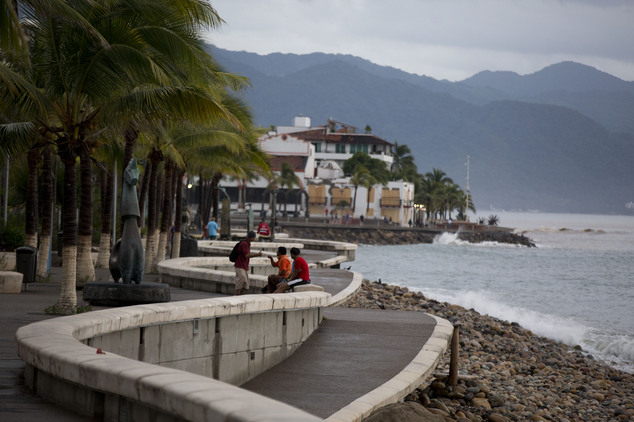Why Hurricane Patricia didn't cause more damage
Remarkably little damage was reported in the wake of Hurricane Patricia, which hit Mexico after peaking Friday as the strongest hurricane on record in the Western Hemisphere.
Hurricane experts say these are among the reasons why:
— The storm hit a sparsely populated area, avoiding direct hits on the resort of Puerto Vallarta and port city of Manzanillo. "You and I would be having a very different conversation if this went over the top of Puerto Vallarta," said Dennis Feltgen, spokesman for the National Hurricane Center in Miami.

People enjoy a seafront walkway the morning after Hurricane Patricia passed further south, sparing Puerto Vallarta, Mexico, Saturday, Oct. 24, 2015. Hurricane Patricia made landfall Friday on a sparsely populated stretch of Mexico's Pacific coast as a Category 5 storm, avoiding direct hits on the resort city of Puerto Vallarta and major port city of Manzanillo as it weakened to tropical storm force while dumping torrential rains that authorities warned could cause deadly floods and mudslides.(AP Photo/Rebecca Blackwell)
— Mountainous terrain quickly weakened the system. "It ran into the mountains and that completely disrupted the circulation," Feltgen said.
— The hurricane had a very narrow wind corridor. Category 5 winds extended out only about 15 miles (25 kilometers) on either side of the eye and hurricane force winds only 35 miles (55 kilometers). "Patricia's Category 5 winds were confined to a relatively narrow swath ... and this swath missed major cities," said Jeff Masters, Director of Meteorology at Weather Underground.
— It advanced rapidly. "The storm was moving fast enough at landfall — about 20 mph (35 kph) — that these heavy rains did not stay in place long enough to generate the kinds of devastating floods we've seen in the past from Mexican hurricanes, " said Masters.
— Dangerous storm surge did not build up along the coast, in part because "the storm blew up from tropical status to Cat 5 so quickly," said Richard S. Olson, director at the International Hurricane Research Center in Miami.
— Mexico's good preparation. "'The 'warning-alert-evacuate-then hunker down' combination seems to have worked to limit the human losses from the wind component of the hazard," Olson said. "Local, state, and national authorities seemed to have gotten this one right."







































































































































































